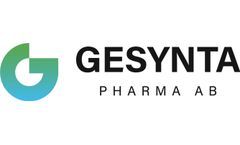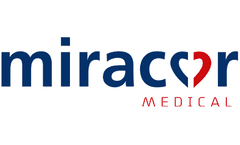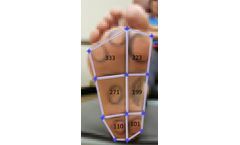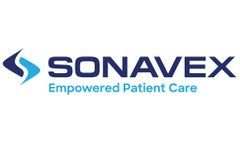Refine by
Microvascular Articles & Analysis
17 news found
Gesynta Pharma AB today announces that all patients have been recruited for the company's clinical Phase II study with the drug candidate GS-248, which is being evaluated as a treatment for the rare disorder systemic sclerosis.The study is intended to demonstrate proof-of-concept and to evaluate the safety profile of GS-248. Top-line data is expected in the fall of 2022. Systemic ...
Furthermore, OxAMI-PICSO3 showed an early improvement in coronary microvascular function post PiCSO treatment in both anterior and inferior STEMI patients. ...
We’re looking forward to presenting “Detecting Diabetic Peripheral Neuropathy Utilizing Thermoregulation of the Plantar Foot” at the upcoming 82nd Scientific Sessions of the American Diabetes Association. Our research aims to detect thermal (infrared) biomarkers of diabetic peripheral neuropathy on the feet of diabetic subjects who have not been diagnosed with DPN. By analyzing ...
“The key goal is to be able to detect the problems associated with microvascular and vascular surgeries with high risk of post-op complications,” said Sonavex CEO David Narrow. A complication of microvascular surgery—used to reattach severed body parts such as fingers and hands by reconnecting tiny blood vessels and restoring ...
Gesynta Pharma AB today announced that an IND (Investigational New Drug Application) has been submitted to the U.S. Food & Drug Administration for its oral drug candidate GS-248 in patients with systemic sclerosis. Concurrently, more than half of the patients in the ongoing Phase II study in four countries across Europe have been recruited. The study investigates the safety of GS-248 and ...
Gesynta Pharma AB today announced that the first patients have been dosed in a Phase II study of its oral drug candidate GS-248 in patients with systemic sclerosis - a debilitating autoimmune disease that causes serious damage to the microvasculature. This proof-of-concept study will investigate the safety of GS-248 and its efficacy on Raynaud's phenomenon and peripheral blood flow in this ...
Occlusion of these small vessels (coronary microvascular disease) can diminish blood flow to the heart leading to chest pain or shortness of breath, as well as diffuse chest discomfort similar (and often as debilitating) to those from classic Coronary Artery Disease (CAD). This presence of angina with minimal or no angiographic CAD is referred to as Coronary ...
Furthermore, OxAMI PICSO showed improvement of coronary microvascular function post PiCSO treatment by accelerating the coronary microcirculation recovery resulting in significantly lower IMR (Index of Microcirculatory Resistance) at 24 to 48 hours when compared to controls, also leading to overall infarct size reduction. ...
Furthermore, OxAMI PICSO showed improvement of coronary microvascular function post PiCSO treatment by accelerating the coronary microcirculation recovery resulting in significantly lower IMR (Index of Microcirculatory Resistance) at 24 to 48 hours when compared to controls, also leading to overall infarct size reduction. ...
Gesynta Pharma AB ("Gesynta"), a clinical stage company developing novel anti-inflammatory agents, today announced that the results from the successfully completed First-in-Human clinical study with its lead candidate GS-248 for the treatment of microvascular disease have been presented at the EULAR 2020 E-Congress. Following these results, Gesynta now intends to commence a ...
The results support the further clinical development of GS-248 in microvascular dysfunction and a Phase II clinical study in patients with Systemic Sclerosis is being planned. ...
Martin Werner, M.D., an angiologist at Hanusch Hospital in Vienna, noted that traditional angiography during EVT does not sufficiently measure microvascular blood flow, a special concern for people with diabetes who may have microvascular impairment. ...
Furthermore, OxAMI-PICSO showed an early improvement of coronary microvascular function post PiCSO treatment. PiCSO therapy accelerates the microcirculatory recovery resulting in significantly lower IMR (Index of Microcirculatory Resistance) at 24-48 hours when compared to controls leading to overall infarct size reduction 1 . ...
GS-248 is initially being developed for treatment of microvascular diseases in chronic inflammatory conditions. The study with GS-248 has a randomized, double-blind design and will be conducted in multiple parts. ...
“For decades, the surgical community has sought a simple, fast and non-invasive way to accurately quantify blood flow after microvascular and vascular surgeries,” said Devin O’Brien Coon, MD, Chief Medical Officer and President of Sonavex and a board-certified plastic and microvascular surgeon at Johns Hopkins. ...
OxAMI-PICSO showed that the use of the PiCSO Impulse System is associated with an early improvement of coronary microvascular function. PiCSO therapy accelerates the microcirculatory recovery resulting in significantly lower IMR (Index of Microcirculatory Resistance) at 24-48 hours when compared to controls leading to overall infarct size reduction. ...
The PiCSO clinical results will be presented during two different sessions, including a Hotline session: Thursday May 24th @ 11:03 in the "Hotline Coronary Intervention" session, Room Maillot "OXAMI-PICSO: index of microcirculatory resistance-guided therapy with pressure control intermittent coronary sinus occlusion improves coronary microvascular function and reduces infarct ...






